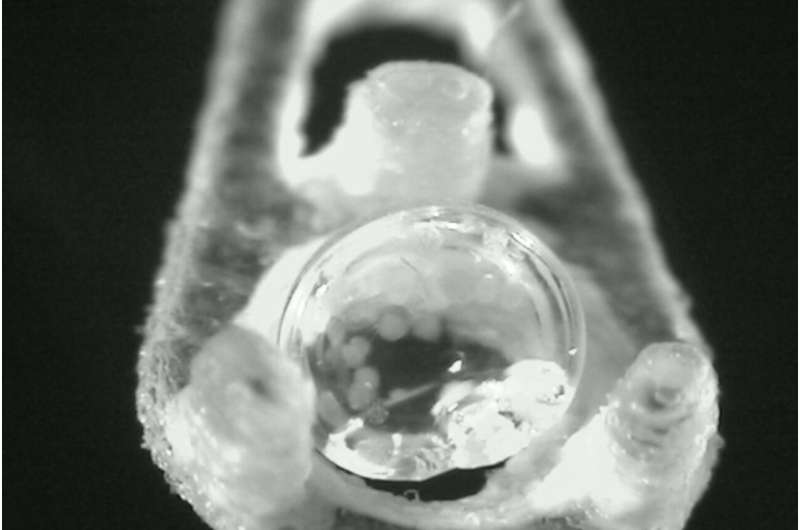
Engineering and medical researchers at the University of Minnesota Twin Cities and Mayo Clinic have developed a new process for successfully storing specialized pancreatic islet cells at very low temperatures and rewarming them, enabling the potential for on-demand islet transplantation. The breakthrough discovery in cryopreservation is a major step forward in a cure for diabetes.
According to the Centers for Disease Control and Prevention, diabetes is the seventh leading cause of death in the United States, accounting for nearly 90,000 deaths each year. While diabetes management has improved greatly over the 100 years since the discovery of insulin, even the most modern methods remain a treatment for the condition rather than a cure.
Pancreatic islet cell transplantation—a process where doctors take groups of cells from a healthy pancreas and transfer them to a recipient, which then begin to make and release insulin on their own—is one method being explored to cure diabetes. One of the main limitations of this approach is that transplants from a single donor are often insufficient to achieve insulin independence in the recipient. Frequently, two, three, or more donor islet infusions are required, which adds risks associated with repeated surgical interventions and multiple rounds of strong immunosuppression induction.
One strategy for overcoming the donor supply problem is to pool islets from multiple donors, achieving high islet dosage with a single infusion. This process is limited by the inability to safely store islets for long periods of time. Previous research has shown storage to be limited to 48 to 72 hours before transplantation.
In new research published in Nature Medicine, University of Minnesota researchers have developed a new method of islet cryopreservation that solves the storage problem by enabling quality-controlled, long-term preservation of the islet cells that can be pooled and used for transplant.
The study was led by John Bischof, Ph.D., a mechanical engineering Distinguished McKnight University Professor and director of the University’s Institute for Engineering in Medicine, and Erik Finger, MD, Ph.D., associate professor of surgery in the University of Minnesota Medical School, M Health Fairview. Both Bischof and Finger are a part of the National Science Foundation Engineering Research Center for Advanced Technologies for the Preservation of Biological Systems (ATP-Bio) and co-direct the Center for Organ Preservation at the University of Minnesota.
The study found:
- By using a specialized cryomesh system, excess cryoprotective fluid was removed, which allowed rapid cooling and rewarming on the order of tens of thousands of degrees per second while avoiding problematic ice formation and minimizing toxicity.
- This new cryopreservation method demonstrated high cell survival rates and functionality (90% for mouse islet cells and about 87% for pig and human islet cells), even after nine months of storage. Storage with this potential cryopreservation approach is theoretically indefinite.
- In mice, the transplantation of these cryopreserved islet cells cured diabetes in 92% of recipients within 24 to 48 hours after transplant.
- These results suggest that this new cryopreservation protocol may be a powerful means of improving the islet supply chain, allowing pooling of islets from multiple pancreases and thereby improving transplantation outcomes that can cure diabetes.
“Our work provides the first islet cryopreservation protocol that simultaneously achieves high viability and function in a clinically scalable protocol,” Bischof said. “This method could revolutionize the supply chain for islet isolation, allocation, and storage before transplant. Through pooling cryopreserved islets prior to transplant from multiple pancreases, the method will not only cure more patients, but also make better use of the precious gift of donor pancreases.”
The researchers also pointed out that this method has the ability to be scaled up to reach large numbers of people worldwide who suffer from this progressively debilitating disease.
Source: Read Full Article



